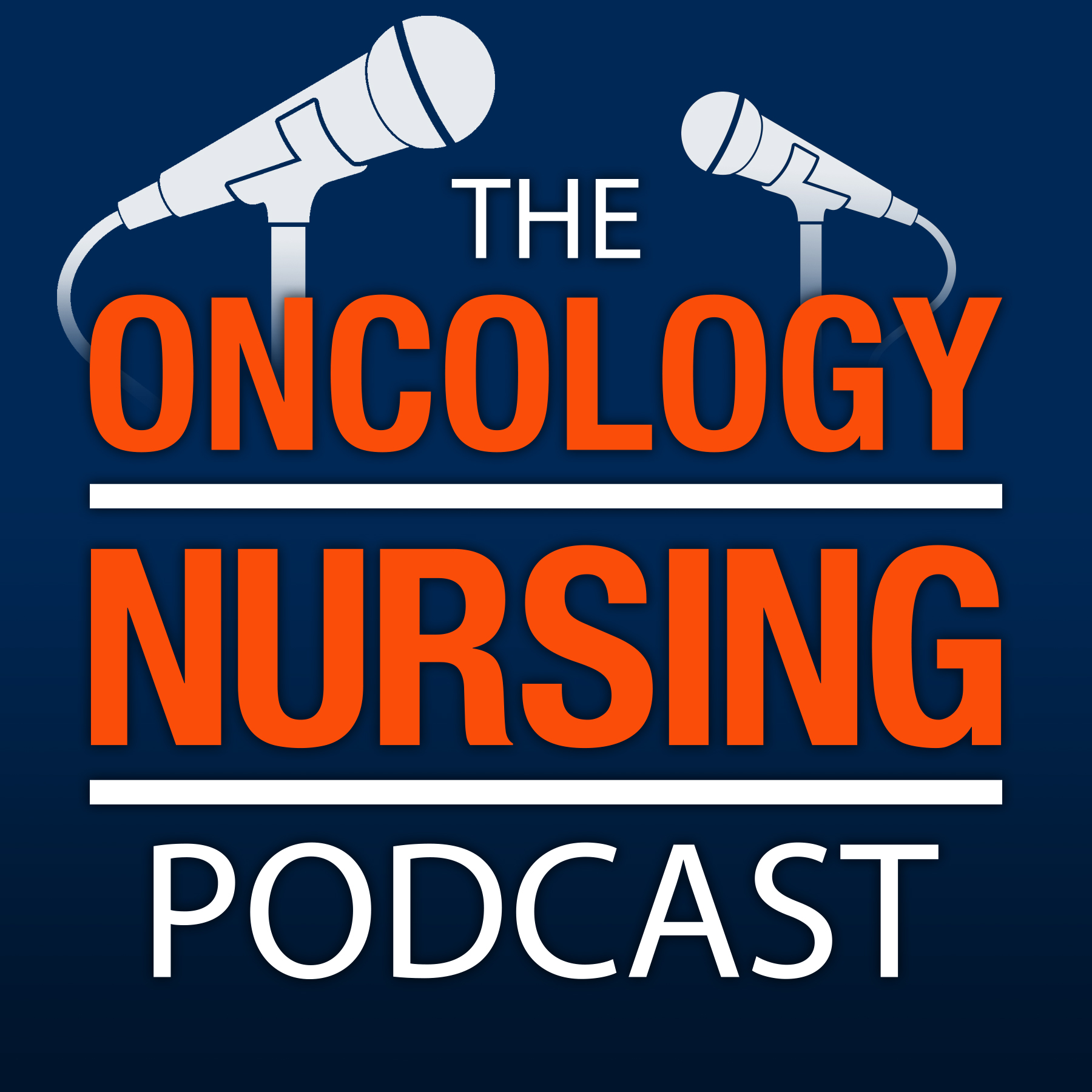
Shownotes Transcript
“It’s been known for quite a while that [KRAS] is a mutation that leads to cancer development, but for really over four decades, researchers couldn’t figure out a way to target it. And so, it was often considered something that was undruggable. But all of this changed recently. So about four years ago, in 2021, we had the approval of the first KRAS inhibitor. So it’s specifically a KRAS G12C inhibitor known as sotorasib,” Danielle Roman, PharmD, BCOP, manager of clinical pharmacy services at the Allegheny Health Network Cancer Institute in Pittsburgh, PA, told Jaime Weimer, MSN, RN, AGCNS-BS, AOCNS®, manager of oncology nursing practice at ONS, during a conversation about the KRAS inhibitor drug class.
Music Credit: “Fireflies and Stardust” by Kevin MacLeod
Licensed under Creative Commons by Attribution 3.0
Earn 0.5 contact hours of nursing continuing professional development (NCPD) by listening to the full recording and completing an evaluation at courses.ons.org by April 11, 2027. The planners and faculty for this episode have no relevant financial relationships with ineligible companies to disclose. ONS is accredited as a provider of nursing continuing professional development by the American Nurses Credentialing Center’s Commission on Accreditation.
Learning outcome: Learners will report an increase in knowledge related to KRAS inhibitors used for cancer treatment.
Episode Notes
ONS Podcast™ episodes:
Episode 330: Stay Up to Date on Safe Handling of Hazardous Drugs
ONS Voice articles:
First KRAS-Targeted Therapy Receives FDA Approval for Lung Cancer
ONS books:
Chemotherapy and Immunotherapy Guidelines and Recommendations for Practice (second edition)
Clinical Guide to Antineoplastic Therapy: A Chemotherapy Handbook (fourth edition)
Safe Handling of Hazardous Drugs (fourth edition)
ONS course: Safe Handling Basics
UpToDate Lexidrug (formerly Lexicomp)
To discuss the information in this episode with other oncology nurses, visit the ONS Communities.
To find resources for creating an ONS Podcast Club in your chapter or nursing community, visit the ONS Podcast Library.
To provide feedback or otherwise reach ONS about the podcast, email pubONSVoice@ons.org.
Highlights From This Episode
“If we look at specifically non-small cell lung cancer, this KRAS mutation is one of the most frequently detected cancer drivers or driver mutations. It’s thought that about a quarter of cases of non-small cell lung cancer have this KRAS mutation, and it’s usually a specific amino acid substitution that we see in non-small cell lung cancer, so what’s known as KRAS G12C mutation.” TS 2:31
“Both of these agents, sotorasib and adagrasib, have the same mechanism of action. They bind to a pocket, very specifically on the KRAS G12C protein, and they lock it in an inactive state so that it can’t cause that downstream uncontrolled signaling to happen. So they’re kind of shutting down the signaling, and therefore you don’t get that uncontrolled cell growth and proliferation.” TS 4:27
“Another big difference to point out, and one that is often used in clinical practice to differentiate when to use these agents, is specifically adagrasib is known to have activity in patients with metastatic non-small cell lung cancer that have active brain metastases. In the clinical trial, they included patients with active brain metastases, and they found that this drug has great [central nervous system] penetration. And so it may be considered the agent of choice in patients with brain metastases.” TS 7:19
“Other considerations—I think one of the big ones—is that there are a lot of drug interactions. Just specifically calling one out that I think is pretty impactful, is sotorasib has an interaction with acid-suppressing medications. So there is the recommendation to avoid [proton pump inhibitors] and H2 antagonists in patients receiving sotorasib. They can take antacids, but you would need to space those out from their dose of sotorasib.” TS 14:14
“This needs to be a collaborative endeavor to make sure these patients are monitored appropriately. We are putting a lot of responsibility on the patients with all of this. So, again, completely administered generally in the home setting, a lot of monitoring, a lot of adverse effects, need for reporting and management—so there’s a lot happening here. And it takes a team to accomplish this and to do it right. And I firmly believe that this is often a collaborative effort between our pharmacy and oncology nursing teams to make this happen. Working together to ensure outreach to patients—I think that patients are often more successful with these medications with early identification of toxicities when we’re doing scheduled outreach.” TS 19:44